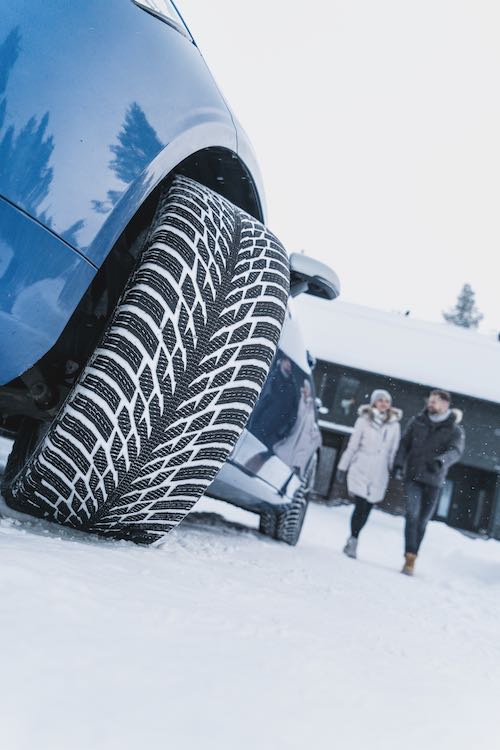When driving in winter conditions, ice is among the trickiest conditions that you can experience. If you live in areas that have a lot of icy roads, which tend to be coastal areas and areas close to large lakes that don’t freeze and stay open for at least a part of the season. When snow is packed tightly it also creates an icy surface, this often happens when you reach areas where many cars have passed and been braking. This often occurs at crossings where you have stop lights. Many accidents will happen here, as you start braking and then the car will just start gliding on the ice and crash into the car in front of you.
On ice you will always be best off with premium studded tyres. The metal studs can dig into the ice and create the grip on ice that you need for braking and acceleration. If they are allowed to be used, which they are in most countries, they are the best winter tyres that you can have. The modern friction tyres, also known as non-studded tyres, are today almost as good at creating grip on ice and they are more flexible as they don’t come with any restrictions. Studded tyres will have date restrictions for when they can be used and they are not allowed in Germany and Poland, which can cause problems if you plan to visit or drive through either of them on a trip.
During the winter you definitely need to have tyres that are approved for winter use and have the snowflake marking on the sidewall of the tyres. If you have long and harsh winters, you are best off with winter tyres that you then alternate with summer tyres for the warm seasons like spring, summer and early autumn. You should change to winter tyres once you reach freezing temperatures as the winter tyres perform better than summer tyres even on dry roads at low temperatures. This is because the summer tyres will turn hard at low temperatures as they are not optimized for low temperatures. There is no need to try to wait for snow to arrive during the autumn, it is better to just change as you see the temperatures creeping close to zero.
For winter tyres it is important to have sufficient tread depth, so that you will have good grip, ability to cope with snow and slush without problems. You should always change to a new set of tyres when you reach 4mm tread depth and you should always try to change the whole set of tyres at once. You should also never only use two winter tyres combined with summer tyres as a method of shortcutting the full change of tyres. The choice of studded or non-studded will depend on how important the grip on ice is for you and what tyre options are allowed. If they are allowed and the date and geographical restrictions aren’t a hinder, then you should go for studded tyres.
For more information regarding the best studded tyres, visit: https://www.nokiantyres.com/
